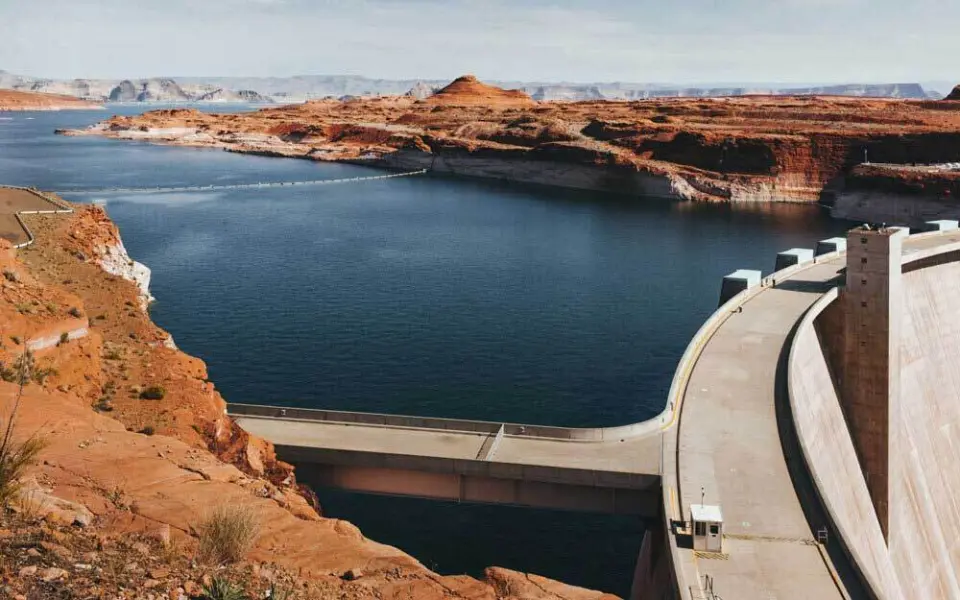
Hydropower: When rivers work for the climate
Hydropower projects are climate protection projects that generate clean electricity from flowing water. Sounds logical? It is. Turbines harness the power of water, convert it into energy and replace electricity from fossil fuels in the process.
The special feature: These projects are often created in remote regions where they could not be realized without additional financing. This is where CO₂ certificates come into play. They make hydropower projects economically attractive and accelerate the expansion of renewable energies worldwide.
Incidentally, a medium-sized hydropower plant can supply up to 50,000 households with electricity. Not bad for a plant that only needs running water.
"Water is flowing. CO₂ is reduced. Climate protection can be this natural."
How hydropower projects work: The process
- 1
Location analysis
Where does the water flow most strongly? Experts measure flow velocities, water volumes and check the topography on site.
- 2
Project planning
Obtaining permits, checking environmental compatibility, considering fish migration routes. This is where it is decided whether the project will become reality.
- 3
Secure financing
In addition to equity and loans, CO₂ certificates provide the necessary profitability.
- 4
Construction of the plants
Constructing weirs, installing turbines, connecting generators. Depending on the size, this takes 12-24 months.
- 5
Mains connection
The electricity generated has to be fed into the grid. In remote areas, this often means new lines over long distances.
- 6
Operation and maintenance
Hydropower plants run for 50-100 years. Regular maintenance and cleaning keep them running.
- 7
Monitoring and certification
Every kilowatt hour generated is measured and converted into CO₂ savings.
How water saves the climate
Hydropower projects reduce CO₂ emissions in a direct way: they replace coal-fired power plants, gas-fired power plants and other fossil energy sources. On average, 0.7 tons of CO₂ are saved per megawatt hour of hydropower.
The calculation is simple:
Hydropower into the grid = less coal-fired electricity needed
Less coal-fired electricity = less CO₂ in the atmosphere
Less CO₂ = better climate
These saved emissions are sold as CO₂ certificates. Companies can buy them to offset their own emissions. A win-win: hydropower projects get funding, companies become climate neutral.

More than just CO₂: the hidden benefits
Local development
Hydropower projects create local jobs. From maintenance to administration, long-term jobs are created in often structurally weak areas.
Energy independence
Countries reduce their dependence on energy imports. Water flows for free and belongs to no one.
Flood protection
Many hydropower projects combine electricity generation with flood protection. Reservoirs regulate water levels and protect communities.
Water supply
Reservoirs often secure the drinking water supply for entire regions. This is an invaluable advantage, especially in arid regions.
Hydropower projects worldwide
Where the water flows best
- Asia: China leads the way with the world's largest hydropower plants. India and Vietnam follow with ambitious expansion plans.
- South America: Brazil is utilizing its huge rivers. Colombia and Peru are discovering their hydropower potential.
- Africa: The Congo, the Nile and other large rivers offer enormous potential. The first major projects are showing the way.
- Europe: Norway and Switzerland are leading the way. Small hydropower is also conquering German and Austrian rivers.
- North America: Canada is relying on its water masses. The USA is modernizing existing plants.
Why support hydropower projects? Four good reasons
Hydropower is climate protection you can touch. Every kilowatt hour from hydropower displaces fossil electricity directly from the grid. The result can be measured precisely and is available immediately.
Hydropower plants run reliably for decades. Once built, they constantly produce clean electricity - without fuel costs and without price fluctuations. An investment that pays off.
Hydropower has been working for over 100 years. The technology is mature and the risks are calculable. Here you are backing a proven climate hero, not an experiment.
While the sun and wind take a break, water flows around the clock. Hydropower supplies base-load-capable green electricity and makes power grids more stable - a real benefit for the energy transition.
The bottom line: water as a climate hero
Hydropower projects are more than just turbines in the river. They are cornerstones of the energy transition, job machines for remote regions and concrete answers to the climate crisis. The figures speak for themselves: a medium-sized hydropower plant saves around 35,000 tons of CO₂ every year. Anyone who supports hydropower projects is investing in a technology that has been working for over 100 years and is becoming increasingly efficient. After all, water flows for free. All we have to do is harness its power. Ready for electricity from nature?



